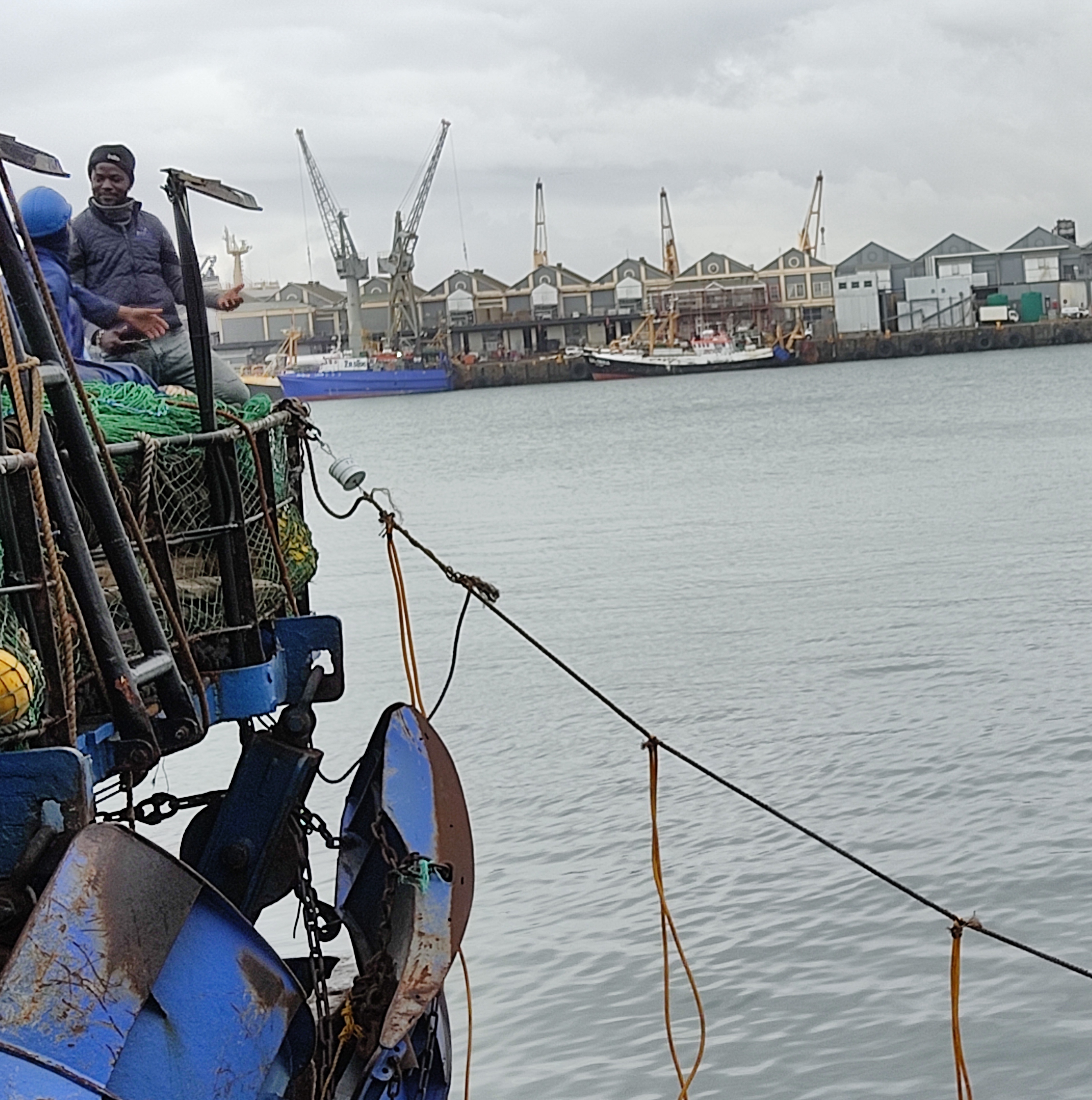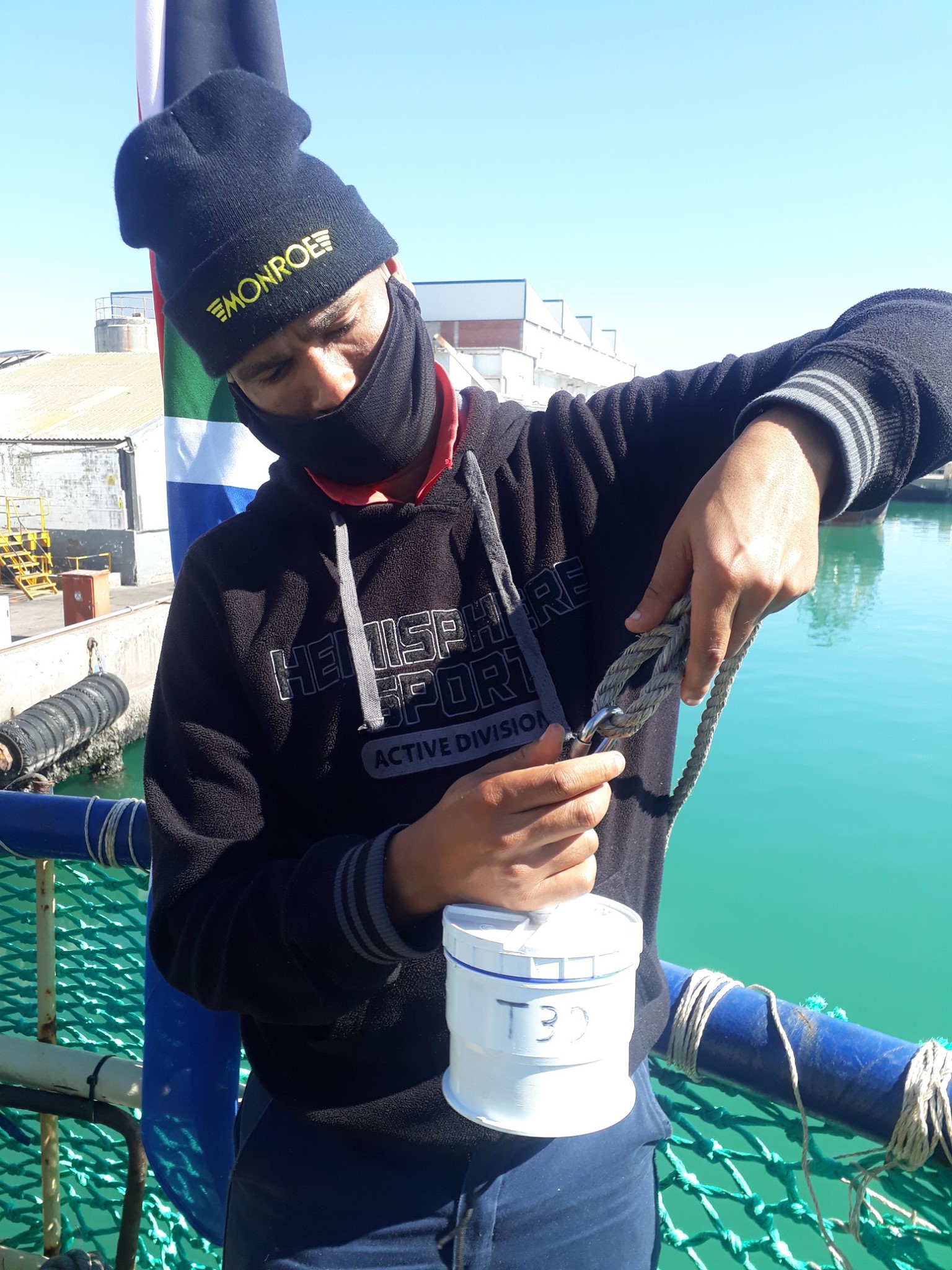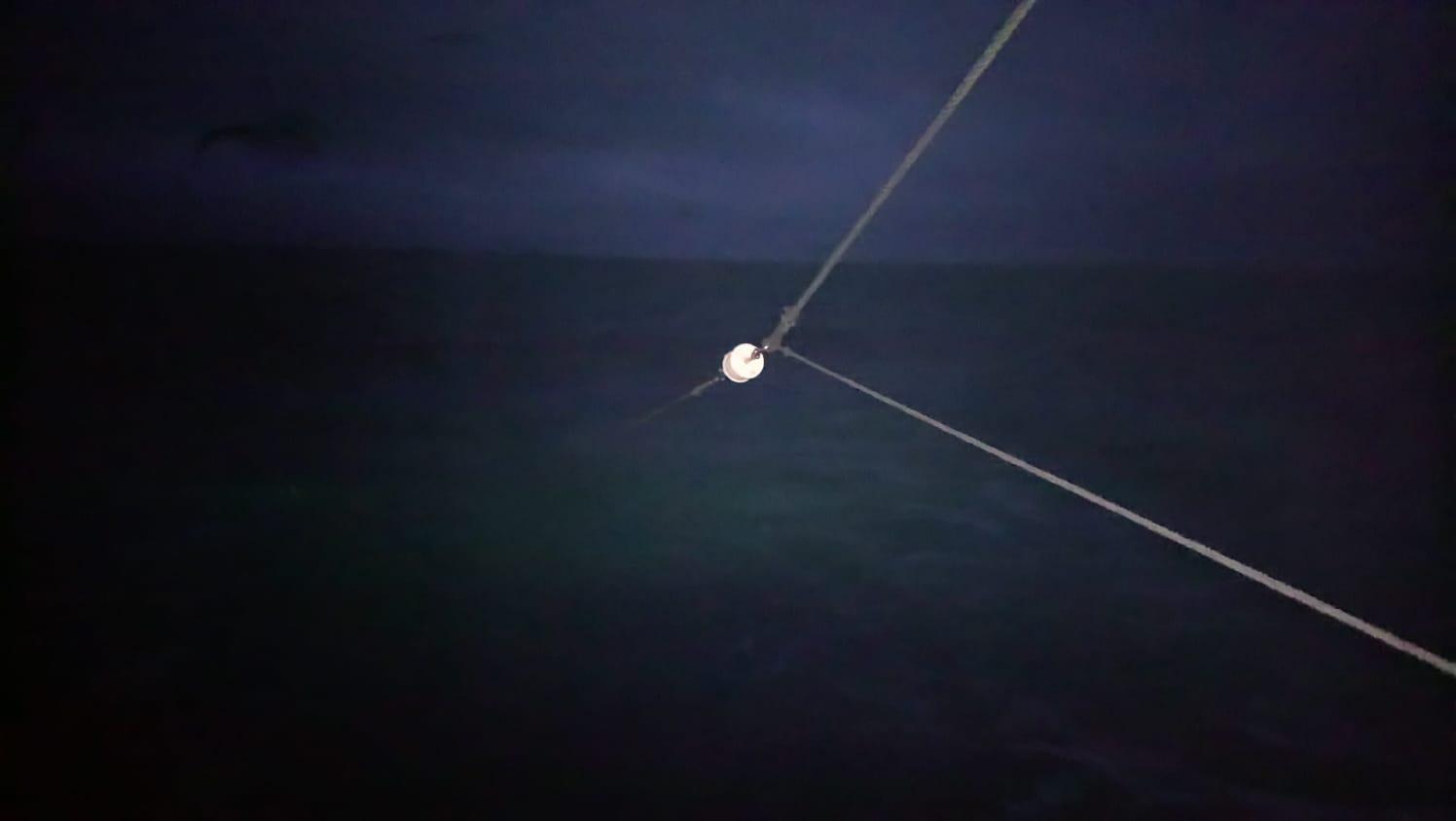
The tension device (white cylinder) deployed on a trawler's bird-scaring line with its hanging streamers in harbour, photograph by Reason Nyengera
The following is extracted from the 2020 Annual Report of the environmental NGO BirdLife South Africa on the development and testing of a tension device to monitor deployment of bird-scaring lines on both demersal trawl and longline vessels. The work, led by Andrea Angel of the Albatross Task Force, received funding from the ACAP Small Grants programme in 2020.
“In the late 1980s bird-scaring lines (BSLs) were developed to mitigate seabird deaths in the fishing industry. While their use is regarded as standard best practice, compliance remains a challenge. Assessing compliance is only possible if an observer is aboard the fishing vessel to ensure the BSL is deployed at every set. To improve and monitor the use of BSLs, BirdLife South Africa partnered with Imvelo Blue Environment Consultancy (IBEC) on a project to further develop its prototype BSL compliance monitoring device. The BSL device was conceived by IBEC founder Sihle Victor Ngcongo and developed by Nelson Miranda of Argonaut Science, a South African company. It can monitor compliance of the use of BSLs during a trip and works by recording the change in tension created by the drag of the BSL in the water.The project was funded by the Agreement for the Conservation of Albatrosses and Petrels. During 2020 we were able to complete a series of at-sea trial deployments and data collection aboard demersal trawl and longline vessels.
We improved the technical specifications of the device’s data collection software and adjusted its sensitivity to various deployment conditions at sea, such as weather and fluctuations in tension. The device was also protected from potential tampering and can detect erroneous or false BSL deployments. These ongoing improvements will make it easier to use on various fleets and with different types of BSLs. The aim is for it to be useful as a compliance tool in the absence of on-board observers. The device includes remote data collection access and a USB port, eliminating the need to remove it from its attachment point on a vessel.
Electronic monitoring is often seen as intruding on the privacy of crew members, but because the form of electronic monitoring provided by this device is not intrusive, we hope it is more likely to be accepted by fishermen. The device can complement and validate official log-book data and compliance with night-setting for longline vessels. It also has the potential to record location and linkups with the Vessel Monitoring and Automatic Identification systems that most vessels are obliged to carry. The project has helped to develop improvements in hardware and software technology, resulting in a resilient device that will directly address issues with compliance.”


Left: A trawler crew member clips the tension device to the bird-scaring line; Right: the tension device deployed at sea at night, photograph by Sihle Victor Ngcongo
Read an earlier ACAP Latest News post on development of the BSL tension device.
With thanks to Andrea Angel, Albatross Task Force Manager, BirdLife South Africa
Reference:
BirdLife South Africa 2021. BirdLife South Africa Annual Report 2020. Johannesburg: BirdLife South Africa. 40 pp.
John Cooper, ACAP Information Officer, 25 May 2021

 English
English  Français
Français  Español
Español